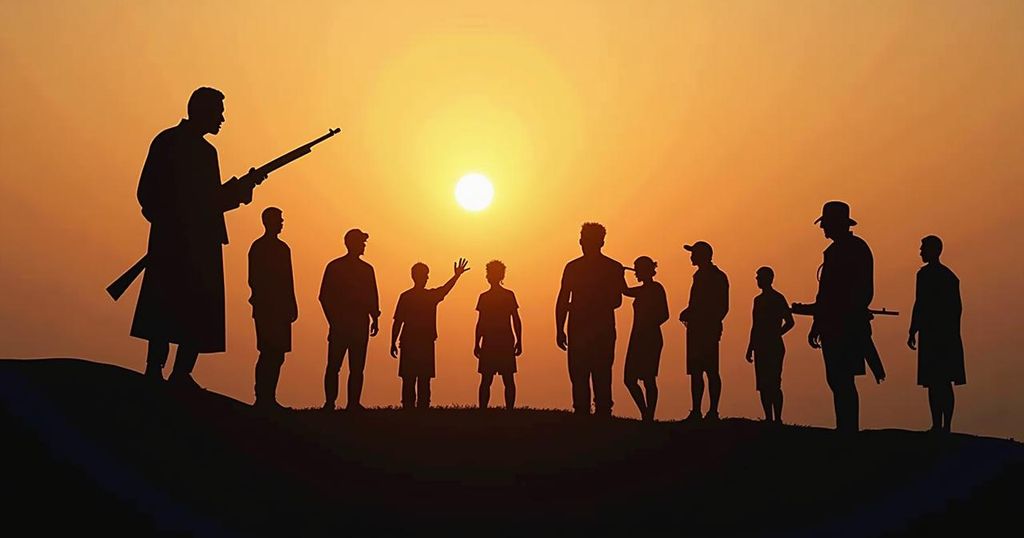Hassan Nasrallah, the leader of Hezbollah, was assassinated in an Israeli airstrike in Beirut, which is expected to have vast implications for Hezbollah’s power and stability in the Middle East. His death may weaken Hezbollah’s military operations, but its capabilities and armed combatants remain significant. This operation has raised concerns regarding U.S. interests in the region, straining diplomatic relations and highlighting the fragile political landscape in Lebanon and the potential for escalating conflict.
On Friday, Hassan Nasrallah, the influential leader of Hezbollah, was killed in an Israeli airstrike in Beirut, marking a significant moment in Middle Eastern geopolitics. With Nasrallah at the helm, Hezbollah evolved from clandestine militant cells into a formidable political entity and the most heavily armed non-state militia in the world. His assassination may precipitate a political upheaval within Hezbollah and have far-reaching ramifications throughout the region, including potential implications for U.S. interests amid rising tensions. The Biden Administration has swiftly responded by reassessing the safety of U.S. personnel in light of the eroding security situation. Recent Israeli strikes, which also claimed the lives of other key Hezbollah figures and civilians, have been described by Firas Maksad of the Middle East Institute as representing a transition to “all-out war” aimed at delivering a crippling blow to Hezbollah. This escalates the Israeli military’s ongoing campaign against the organization, compounded by saboteur activities disrupting Hezbollah’s communications and infrastructure. Nasrallah, who gained popularity for his compelling speeches—some widely distributed through DVDs and used as ringtones—wielded profound influence over Shiites in Lebanon and the broader Arab populace. He expressed his ambition for leadership as a child and once articulated, “The only way that we have is to take up arms and fight the occupation forces” during the war in Lebanon in the early 1980s. His tenure, which began after Hezbollah’s founding during the Israeli invasion in 1982, positioned him as a key player in the Axis of Resistance, especially following the assassination of Iranian general Qassem Soleimani in 2020. Despite his death, experts suggest that Hezbollah remains a potent threat to Israel. The current estimate indicates that up to fifty thousand armed combatants are affiliated with Hezbollah, supplemented by vast military resources and combat experience from Syria’s civil conflict. Following the assassination, analysts projected that Hezbollah might escalate its military response, devoid of limitations. Israeli Prime Minister Benjamin Netanyahu explicitly ordered the aerial assault while attending the U.N. General Assembly, where he condemned Hezbollah and described its cross-border incursions as intolerable. The airstrikes occurred despite ongoing U.S. diplomatic efforts to negotiate a ceasefire between Hezbollah and Israel. Secretary of Defense Lloyd Austin noted that the U.S. was oblivious to the timing of the operation, raising questions regarding cooperation and intelligence-sharing between U.S. and Israeli forces. The ramifications of Nasrallah’s assassination extend beyond Hezbollah, presenting challenges for Lebanon’s national sovereignty as it grapples with a paralyzed government. Zohar Palti, a former chief of Mossad, emphasized the role of Lebanon’s own army in potentially recovering state power from Hezbollah, illustrating the fragile nature of Lebanon’s political landscape, which has been weakened by sectarian strife and a severe economic crisis. Iran, Hezbollah’s longstanding ally, expressed shock and convened an emergency meeting of its Supreme National Security Council following the airstrikes. Supreme Leader Ayatollah Ali Khamenei signaled solidarity from all resistance forces in the region, further complicating an already tense environment. President Biden described Nasrallah’s assassination as a form of justice for numerous victims but acknowledged the difficult path toward de-escalating the conflict in the region. He underscored the importance of closing diplomatic dialogues to restore stability to the broader Middle East, although the likelihood of such outcomes remains ambiguous given the current volatility.
The recent assassination of Hezbollah leader Hassan Nasrallah has ignited discussions about the potential shift in power dynamics within Lebanon and the broader Middle Eastern region. As the leader of Hezbollah, Nasrallah played a pivotal role in the transformation of the organization into not only a powerful militia but also a significant political force in Lebanon. His death raises questions about Hezbollah’s future, Lebanon’s governance, and the United States’ position and objectives in a region already fraught with conflict and instability. Over the past decades, Hezbollah has evolved into a key military and political entity, particularly noted for its resistance against Israeli forces during the 1980s and 2000s and its involvement in the Syrian civil war. Nasrallah’s assassination highlights the ongoing tensions between Israel and Hezbollah, as well as the intricate relationships among regional powers such as Iran, the U.S., and various extremist groups.
The assassination of Hassan Nasrallah represents a pivotal moment that may alter the landscape of both Hezbollah and Lebanese politics while complicating U.S. interests in the region. Although Israel may claim a tactical victory, the long-term implications of this act remain uncertain amidst the complex interplay of political factions and military presences in the Middle East. With potential power vacuums emerging, the future of Lebanese governance and the broader regional stability is at stake, as various stakeholders navigate the aftermath of a military operation that has historically been intertwined with deep-rooted animosities and conflict.
Original Source: www.newyorker.com






